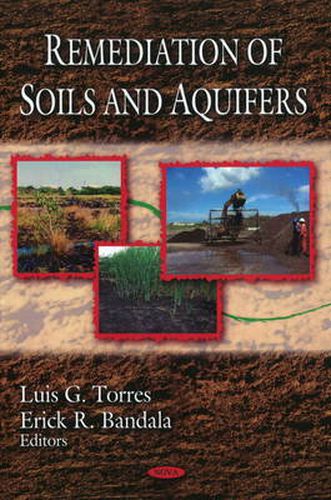Readings Newsletter
Become a Readings Member to make your shopping experience even easier.
Sign in or sign up for free!
You’re not far away from qualifying for FREE standard shipping within Australia
You’ve qualified for FREE standard shipping within Australia
The cart is loading…






The cost of cleaning up water and soil leads to the same undeniable conclusion: Existing models of industrial development are simply not sustainable from an ecological view point and they cost a lot of money in purely economic terms. Mexico is no exemption to this general rule and soil and groundwater contamination are neither here, nor in other Latin American countries a new or emerging issue. As an oil exporting nation, Mexico, historically has paid major attention to hydrocarbon contamination and its implications for the environment, especially when its impact was related to drinking water safety and public health criteria. It is only more recently, that a more generic and holistic approach has emerged, which has included other industrial sectors and their environmental liabilities. This new approach is directed towards the government’s and private industry’s extended obligation and responsibility in mega-site remediation, brown-field re-vitalisation and the re-urbanisation of degraded land. This book arose from the scientific interest and the environmental preoccupation of researchers and governmental representatives alike. They provide a concise overview of concepts and remediation/sanitation technologies available today. At the same time they bear witness to the wealth of solutions available in order to tackle the inherent and very serious problem of environmental degradation in Mexico.
$9.00 standard shipping within Australia
FREE standard shipping within Australia for orders over $100.00
Express & International shipping calculated at checkout
The cost of cleaning up water and soil leads to the same undeniable conclusion: Existing models of industrial development are simply not sustainable from an ecological view point and they cost a lot of money in purely economic terms. Mexico is no exemption to this general rule and soil and groundwater contamination are neither here, nor in other Latin American countries a new or emerging issue. As an oil exporting nation, Mexico, historically has paid major attention to hydrocarbon contamination and its implications for the environment, especially when its impact was related to drinking water safety and public health criteria. It is only more recently, that a more generic and holistic approach has emerged, which has included other industrial sectors and their environmental liabilities. This new approach is directed towards the government’s and private industry’s extended obligation and responsibility in mega-site remediation, brown-field re-vitalisation and the re-urbanisation of degraded land. This book arose from the scientific interest and the environmental preoccupation of researchers and governmental representatives alike. They provide a concise overview of concepts and remediation/sanitation technologies available today. At the same time they bear witness to the wealth of solutions available in order to tackle the inherent and very serious problem of environmental degradation in Mexico.